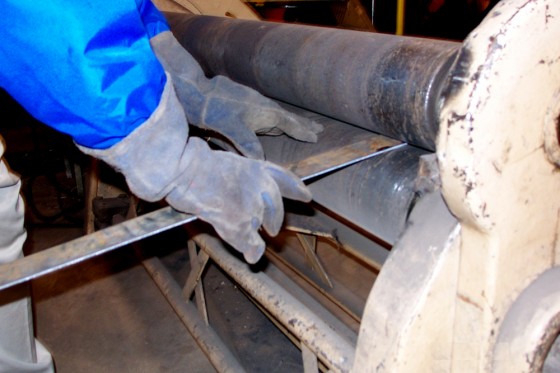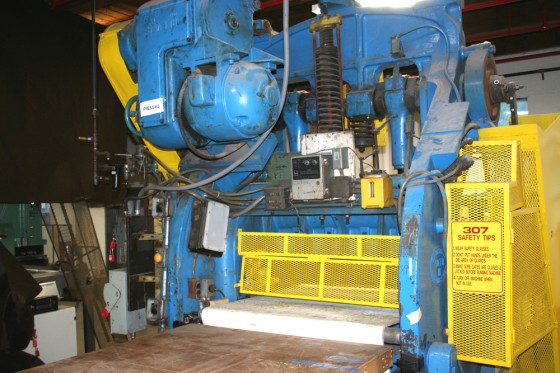At first thought it would seem that the hazards of operating a dangerous machine should be apparent to the average person, so that, if an accident occurs, it must be due to his own negligence. For example, if a machine for shearing thick stacks of paper contains a large knife that descends forcefully when a foot pedal is pressed, one might expect that common sense would lead the operator to keep his hands out of the danger zone. Again, in a machine that has exposed gearing, common sense should serve to warn the operator to keep his hands-and his clothing-away from the gear teeth. If a printing press has two rollers which are in forceful contact and which rotate together in such a way as to create an “ingoing nip point” at their line of contact, it would seem that the operator’s protective instincts should suffice to keep his fingers away from the nip point.

The point of view that accidents are caused by the machine operator’s carelessness or negligence is widely prevalent. On one occasion, when this writer was inspecting a power shear such as described above, he remarked to nearby workers that the machine was highly dangerous. They looked at him in surprise and disbelief.

This naive attitude of course leads to accidents. However, even if care is taken, accidents can occur. The reasons are as follows:
1. The human being is not a perfect machine. His attention wanders from time to time. He daydreams, especially when performing repetitious tasks, which are of course very common in industry. Such tasks become routine so that they do not fully engage his attention, leaving him free to think of matters not related to the work in hand. Under these conditions, the operator’s common sense and normal protective instincts become less effective in keeping his hands out of the danger zone, thereby exposing him to accidents, which could easily be avoided if he was fully concentrating on the danger.
2. Because of economic necessity, employers often require workers to work fast. This of course reduces the amount of time that the worker can expend on avoiding danger. In addition, the pressure of producing rapidly makes the worker tense and so decreases his ability to cope with the danger.
3. The operator may not have sufficient knowledge of human reactions to foresee the danger. For example, while an employee is cleaning a machine he may not visualize that his cleaning rag might be drawn into an ingoing nip point as described above; nor would he recognize that, if this should happen, his instinctive reflexes would cause his hand to hold onto the rag in an effort to pull it out of the nip point, thus leading his hand to be drawn into the nip point.
4. A worker may indeed take adequate precautions when first operating a potentially dangerous machine. However, as time goes on and he becomes familiar with the machine, he will generally tend to become inured to the danger-providing of course that no accident has happened yet. This tendency might be called “Familiarity Breeds Complacency,” and commonly leads to a relaxation of the precautions needed to avoid accidents. To this dangerous tendency might be added the prevailing tendency, on the part of technically untrained personnel, to take for granted that machines are correctly designed for their intended purpose-thereby leading them to make the uncritical assumption that whatever guarding devices there may (or may not) be on a machine are adequate. The consequence is frequently an under-evaluation of the danger of the machine.
5. Finally, account must be taken of accidents that may bring part of a person’s body into contact with a dangerous part of a machine. As a simple example, consider the case of a worker tripping and losing his balance in such a way as to bring his hand into contact with the rotating teeth of exposed gearing.